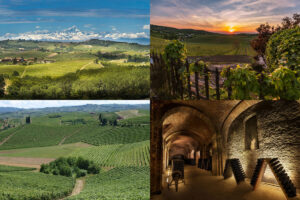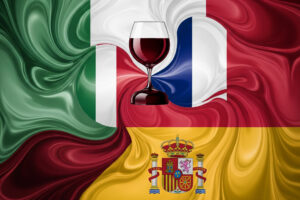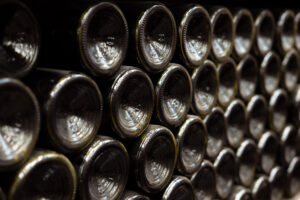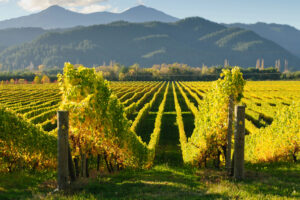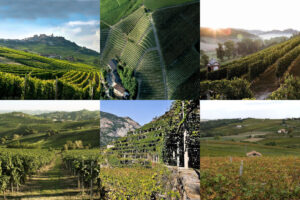International tensions, inflation, purchasing power put to the test a little everywhere in the world, but also changes in lifestyle, which see, at all latitudes, a reduction in the consumption of alcoholic beverages, and therefore also of wine, especially among young people, with a scenario that, overall, both in the short and medium term, for the nectar of Bacchus, is not so favorable. Extreme synthesis of a 2023 that, in these days, sees companies begin to pull budgets. And, according to the Italian wineries, united in the Italia del Vino Consorzio, which brings together 25 top-notch entities such as Angelini Wines & Estates, Banfi, Bisol 1542, Ca Maiol, Cantina Mesa, Cantine Lunae, Casa Vinicola Sartori, Di Majo Norante, Diesel Farm, Duca di Salaparuta, Ferrari Fratelli Lunelli, Gruppo Italiano Vini, Librandi Antonio and Nicodemo, Marchesi di Barolo, Medici Ermete & Figli, Nosio Spa, Ronchi di Manzano & C., Santa Margherita Gruppo Vinicolo, Tenimenti Leone, Tenuta La Palazza, Terre de La Custodia, Terredora di Paolo, Torrevento, Zaccagnini and Zonin1821, recently joined by Diesel Farm owned by Renzo Rosso and Arianna Alessi, Tenimenti Leone owned by the Calzedonia Group and the Veronesi Family, and Nosio spa owned by the Mezzacorona Group.
Businesses that put together an aggregate turnover of 1.5 billion euros, account for 15% of national wine exports, for 3,500 jobs, 230 million bottles produced and 15,000 hectares of vines distributed in 19 regions of Italy, gathered yesterday in Rome (where WineNews collected interviews and comments with some of the protagonists, in a video in the coming days). “As official data note, the wine market is experiencing a period that is not particularly favorable: there is a reduction in wine consumption all over the world, including Italy. In 2023, the turnover of the Italian wine industry”, a note from Italia del Vino Consorzio, led by Roberta Corrà, explains, “is expected to experience its first decline since 2020: accounts will close at a loss of -2.9%, at 13.3 billion euros, of which 7.65 on the export side (-2.2%) and 5.61 on the domestic market side (-4%). This decline comes after a two-year period of growth (+26% in 2021 post-Covid and +6.6% in 2022, on which energy and material costs as well as inflationary dynamics have strongly impacted)”.
Worldwide, recalls Italia del Vino Consorzio, 280 million hectoliters of wine are consumed. More than half of these volumes are made in a handful of countries, led by the United States (14%), followed by France (10%), Italy and Germany (7%), then China (6%) and the United Kingdom (5%). Then Canada (2%) and Japan (1%). The countries monitored make up the backbone of Italian wine exports: 64% by value, with the U.S. leading (24%), followed by Germany (15%), the UK (10%), Canada (6%), France (4%), and Japan (3%), with China at the tail end (1.5% share), a country that has been looked at with great attention for more than a decade, but which, in the last three years, has slowed down sharply in terms of import and also consumption rates.
“In a general context that sees, among the countries to which Italy is most exposed, only the U.S. and Canada growing in terms of consumption, while negative dynamics involve Uk, Germany, Japan and France more or less heavily, for our country scenarios of relative stability are foreseen, with elements of concern dictated by the erosion of domestic consumption (-1.2 million hectoliters projected to 2039, remembering that the domestic market is worth half of the total). Exports still and increasingly turn out to be the key to making the sector sustainable, even if the projections from now to 2039 compared to the 2010/19 average see a growth of 1.8 million hectoliters (thus around 22.5-23 million), which only partially offsets the shortfall generated by the domestic market, with a positive balance of just over half a million hectoliters”. Consequently, the expected evolution, understood as the intersection of demographics and consumption attitudes, indicates that the wine-consuming world in the future will no longer build its growth on volume, but much more likely on the value expressed by bottles of wine.
A component - that of value - that has multiple declinations: physical and spiritual well-being, environmental and ethical sustainability, and “social” consumption, in which wine increasingly enters into close competition with other beverages. “Joining forces by showing the world a common and cohesive front”, explains the president of Italia del Vino Consorzio, Roberta Corrà, “is essential to effectively communicate Italian wine excellence, also and especially from an export perspective. For 2024, Italia del Vino plans to make a system in the two main international wine fairs (activities that are coordinated by an excellent service agency of the wine world, Area 39, ed.): Vinexpo Paris and Prowein Dusseldorf, with a collective participation of the Consortium companies. We will then continue to invest in research and development projects, focusing on technological innovation and digitization, in line with the objectives set by the European Union. In this historical period in which technology and digitalization play an increasingly crucial role, investments of this kind can contribute significantly to improving the competitiveness and sustainability of the Italian wine sector, within an international scenario that appears increasingly complex and challenging”.
Copyright © 2000/2025
Contatti: info@winenews.it
Seguici anche su Twitter: @WineNewsIt
Seguici anche su Facebook: @winenewsit
Questo articolo è tratto dall'archivio di WineNews - Tutti i diritti riservati - Copyright © 2000/2025























